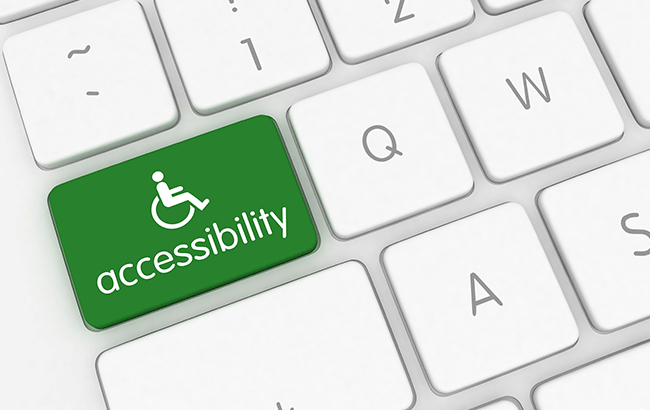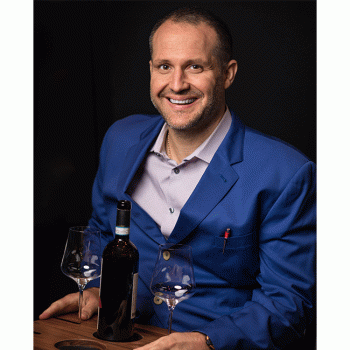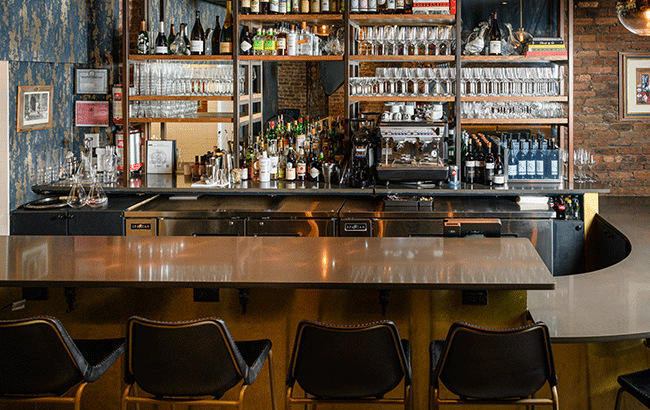Bars without barriers: how can venues prioritise accessibility?
The on-trade can often be unwelcoming or difficult to navigate for customers with disabilities – but some venues are putting accessibility first in both their design and their culture. We explore what the hospitality industry can learn from these bars.

*This feature was originally published in the November 2021 issue of The Spirits Business magazine.
How can a venue be as inclusive as possible? That was a question sommelier Yannick Benjamin set out to answer through his restaurant and bar Contento, which opened in New York City’s East Harlem neighbourhood last summer. Benjamin designed the space to be “barrier‐free” for guests and employees – “meaning that someone with a disability can go in there and feel welcomed”, he says.
He recalls a recent dinner service that exemplified Contento’s mission. At one table, a person in a wheelchair was having a meal; in the next group over, a guest who was a member of the low‐vision and blind community was reading a menu in Braille; another customer in a wheelchair was enjoying a drink at the bar thanks to lower counter seating.
“That was all at once,” says Benjamin, who uses a wheelchair himself. “To me, that’s what it’s all about. It’s just this incredible diversity of different people coming to the restaurant and feeling comfortable.”

Creating a welcoming atmosphere is at the very heart of hospitality, and places such as Contento demonstrate how important accessibility is when fostering an inclusive environment. Unfortunately, such venues are the exception rather than the rule. A survey conducted in 2019 by UK charity Leonard Cheshire found that 86% of disabled people face difficulties accessing bars or pubs.
While service providers must obey laws such as the American Disabilities Act of 1990 (ADA) or the UK’s Equality Act 2010, which specify accessibility requirements to protect people from discrimination, the varied needs of disabled customers and employees often go unfulfilled.
In his 13 years overseeing accessibility compliance for the City of Chicago, disability rights attorney Joseph Russo says the “number one” physical access violation he noted among small businesses was the lack of an accessible path of travel, defined as “everything that leads up to any primary function area”. In a wet‐led establishment, that’s the bar. “So if there’s no accessible route, meaning there’s no ramp, there’s no parking leading to that ramp, there’s no [accessible] door, you have to make modifications,” he explains.
An accessible path of travel is a central tenet of the ADA, but Russo frequently encountered venues that weren’t meeting the requirements. He recommends that business owners seek professional guidance to ensure their establishments are up to code. “Know the law and follow it, and get advice on it if you need it, either from an attorney or from an architect specialised in it,” he says. “And remember to provide the accessibility before it’s asked for. If you’re not accessible in the way someone needs, either for communication or for physical access, you have failed them at that point.”
Inaccessible venues are ignoring a vast economic opportunity. The UK hospitality sector misses out on £163 million (US$223m) each month by overlooking the spending power of disabled people, sometimes called the ‘purple pound’.
As Russo, who uses a wheelchair, points out: “It’s a competitive marketplace, and it’s not just the dollars of people with disabilities, but it’s all the people we’re associated with that you’re going to lose. There is a profit motive behind this.”
A comprehensive approach
Of course, adhering to accessibility laws is the bare minimum operators can do. Prioritising accessibility means “really looking at going beyond what your contractor is recommending, and really thinking through all the different pieces and parts”, says Kim Haasarud, mixologist and United States Bartenders’ Guild president.
Haasarud’s new cocktail venue, Garden Bar, will be housed in a renovated bungalow in downtown Phoenix. Throughout the bar’s development process, she and her team have aimed “to think of everything we possibly can to make it more accessible to a wide variety of people”, from widened doorways, to bathrooms without stalls, to a website with comprehensive details about the venue’s layout. (A 2019 study by access‐review service Euan’s Guide found that 93% of disabled people try to find information on a place’s accessibility before visiting, so a detailed, easy‐to‐navigate website is vital).
Robin Sheppard, co‐founder of Bespoke Hotels, and the UK government’s former hospitality sector champion for disability, also stresses attention to detail when developing an accessible venue. “It’s looking at the height of the bar, the noise, ensuring that the lighting and the acoustics are in line because you’ve got a lot of neurodivergent customers,” he says.
In 2004, Sheppard was diagnosed with Guillain‐Barré syndrome, a nerve condition that resulted in several months of paralysis and years of recovery. Based on his experience, he made accessibility a major focus in his hotel chain, and later co‐founded the Blue Badge Access Awards to recognise stylish inclusive design. He is a proponent of accessibility features that are both functional and aesthetically pleasing – a combination that can be hard to come by. “Very often, the disabled toilets in a bar are plain hospital-white, whilst the regular toilets follow the decor of the bar,” he says. “I suppose nirvana would be if we could just make it normal that the disabled provision is just as joyous and as elegant and chic as anything else.”

Culture shift
Staff training is key to creating a culture of accessibility. As Benjamin puts it: “I think you can have the most perfect restaurant as far as universal design, but if the culture isn’t there, then what does it all mean?” At Contento, team members are encouraged to view every day “as a learning experience”, and in addition to sensitivity training, staff receive lessons in American Sign Language to improve their communication skills with the deaf and hard of hearing community.
Benjamin continues: “We don’t pretend to know everything. There are over 16 million Americans that have a disability, and many of those Americans have what you would call an invisible disability, right? It could be something neurological, it could be a speech impediment, it could be a lot of other things.” So he can help better cater to his guests, the first thing he says is: “Please let me know your experience.”
According to Robin Nance, senior manager of trade engagement at Beam Suntory, education and reassessing company practices are good starting points for shaping an accessible culture. “Having some knowledge of different types of disabilities can change how you hire,” she explains. “Include a space on your application that asks about accommodations that may be needed. Encourage employees to be comfortable asking for what they need.”
Building a venue that welcomes everyone is an ongoing process that involves examining a bar’s physical features, as well as its culture. But making progress towards accessibility doesn’t have to be expensive. Russo suggests tapping into free resources and becoming involved with local organisations to learn the needs of your community. “Independent living centres might have people you can work with or talk to, and it opens up a rapport that results in better customers and makes you a better operator,” he says.
Nance recommends beginning with small changes, like listing your bar’s accessibility features online, and carrying plastic straws for people who need them. “There’s so much more to this conversation,” she says, “but this is a good start.”
Related news
Alexandra Tsatsouli wins Bartenders Society 2025 competition
